WILLIAM CHRISTIAN SYMONS – PART II (1845-1911)
Following the success of The Symons Collection part I in our March 2023 sale, Bellmans are delighted to be offering further works from the collection of the artist’s family in our sale of Old Master, British & European Paintings on 10th October.
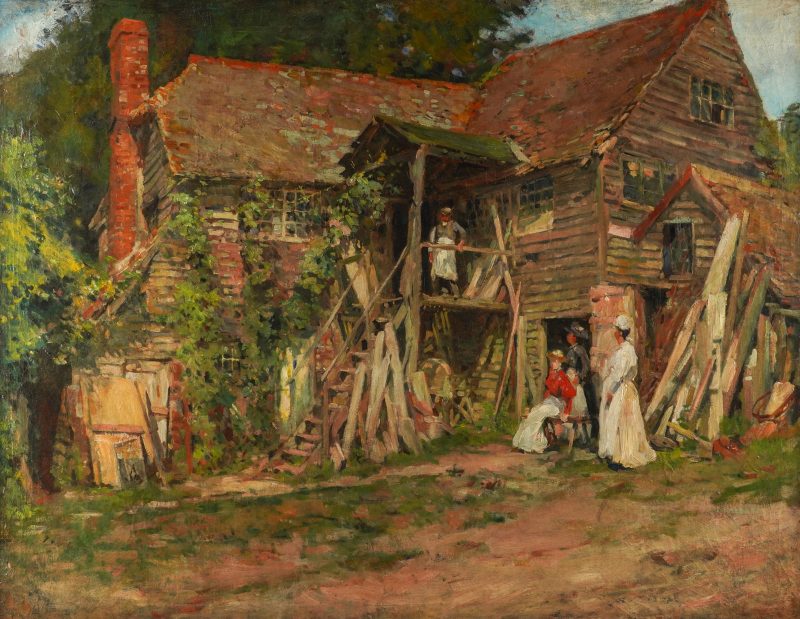
Highlights of the group include The Carpenter’s Yard, as well as a study for the same work, The Rose and Crown at Mayfield, Gypsy Caravans, The Oast House and The Garden Walk, Sedlescombe all of which capture the beauty of South-East Sussex which Symons made his home following his departure from London in the mid-1880s. It also displays the artist’s remarkable array and ability to depict different subject matters, with charming portraits of friends and family as well numerous still lifes.
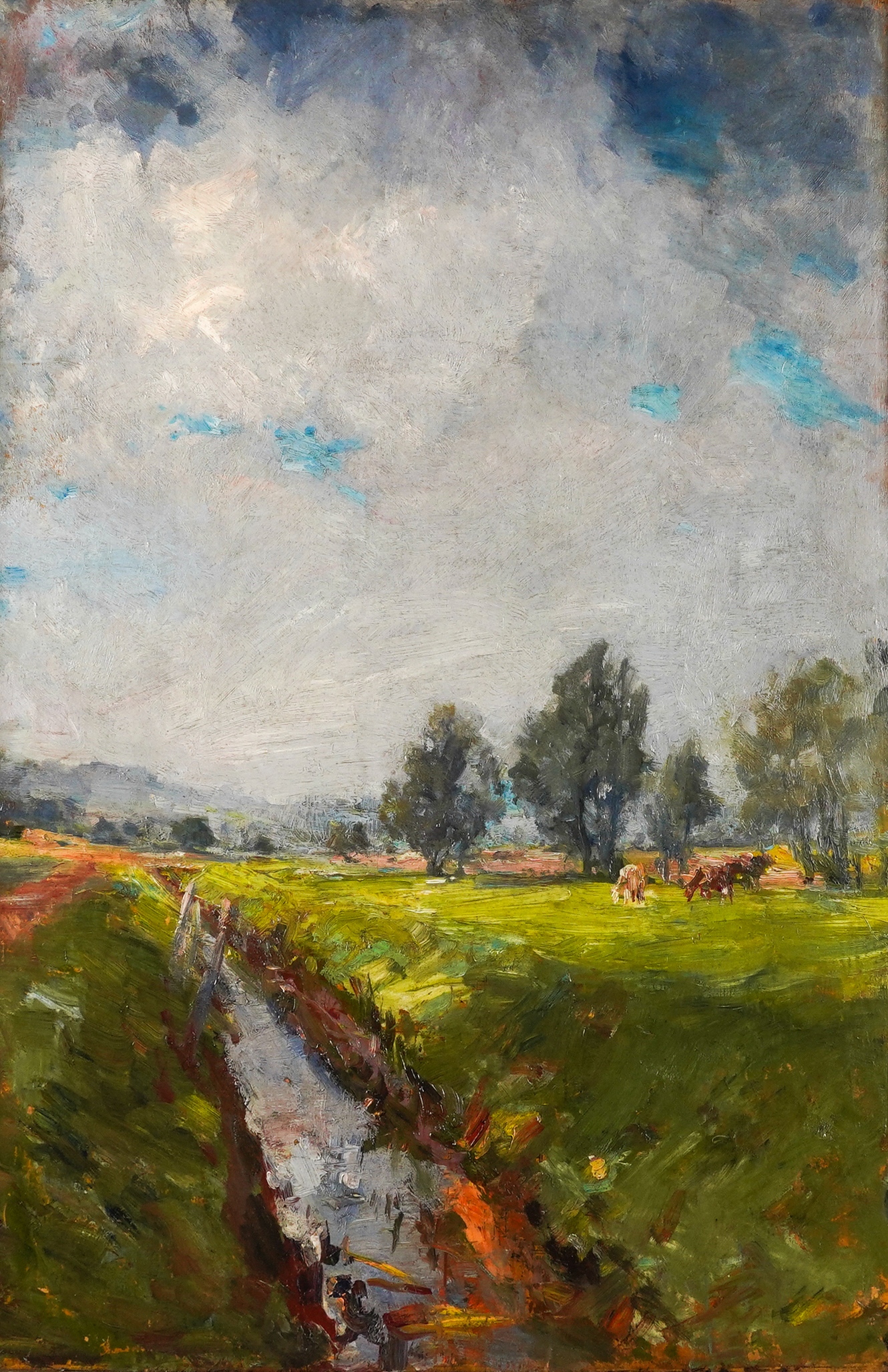
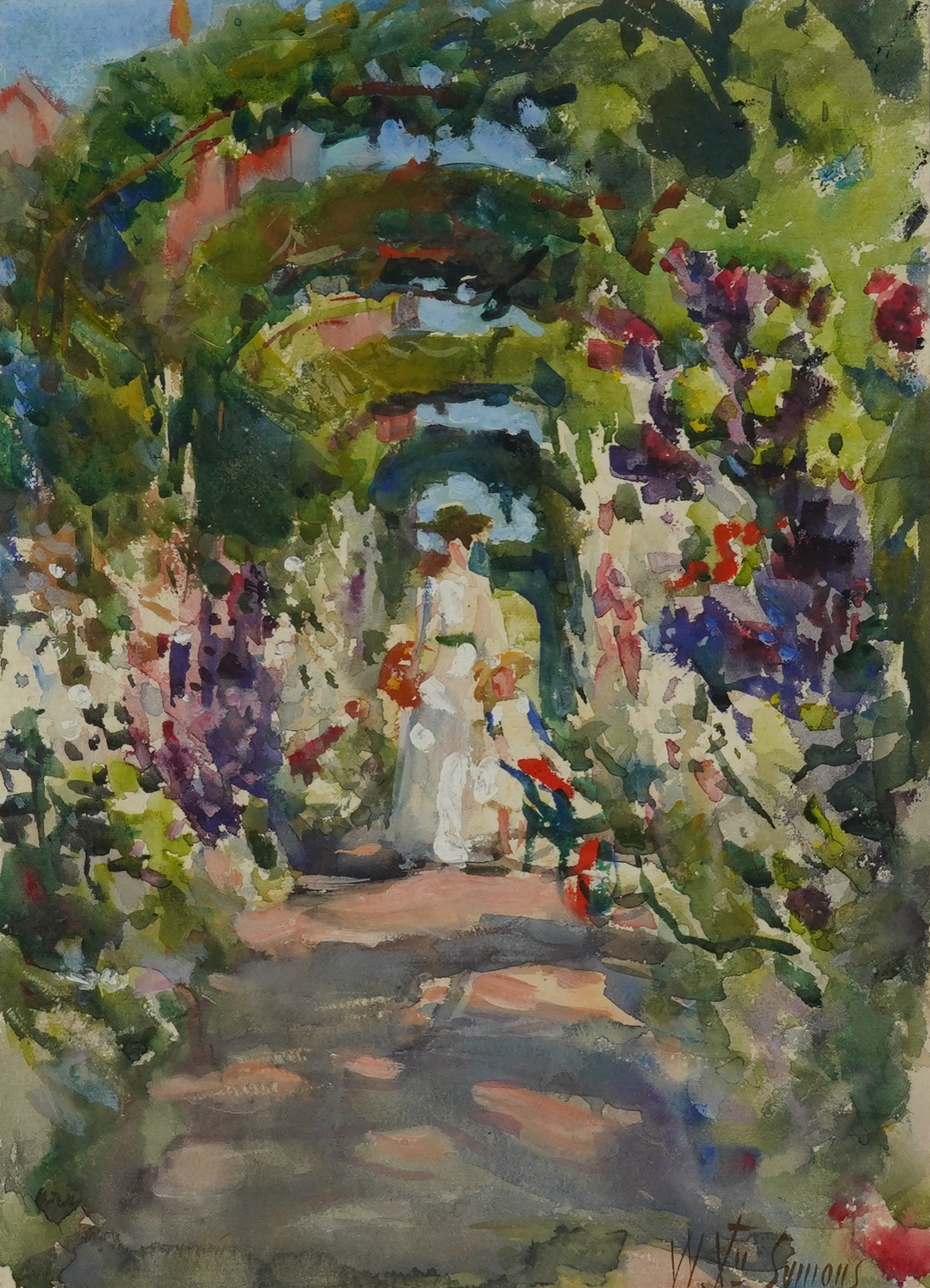
BIOGRAPHY
Symons was born on 28th November 1845 at no.1 New Bridge Street in Vauxhall, eldest son to Cornish parents, William Symons and Elizabeth Symons who ran a printing and book selling business. He studied at the Lambeth School of Art where he came in to contact with Henry Doulton (1820-1897) one of the founders of the famous pottery firm. Doulton was persuaded by Symons and other artists to employ designers to refine the company’s range of decorative pottery. Symons furthered his studies at the Royal Academy schools where he shared a silver medal with close friend Walter William Ouless (1848-1933) for ‘drawing from the antique’.
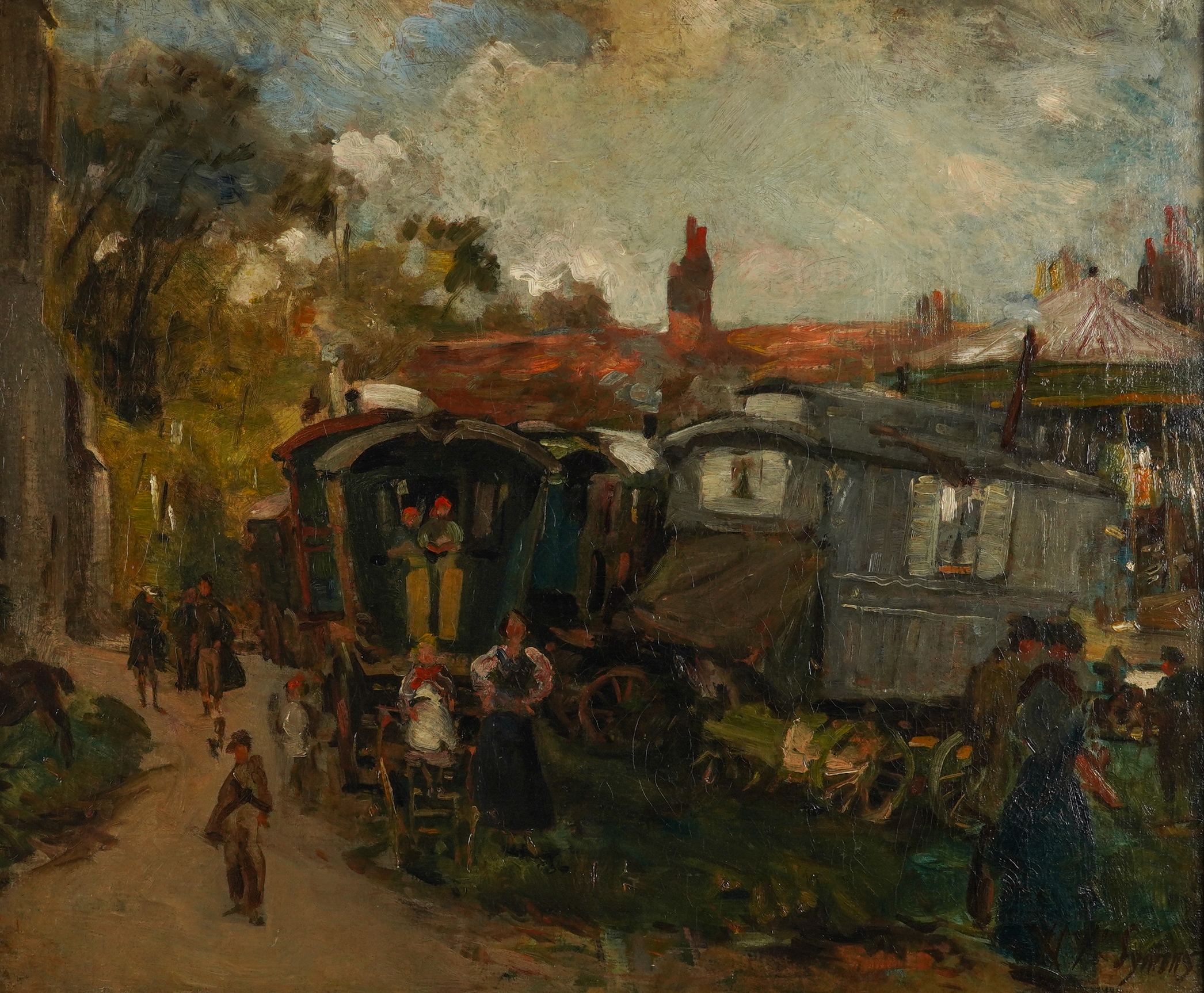
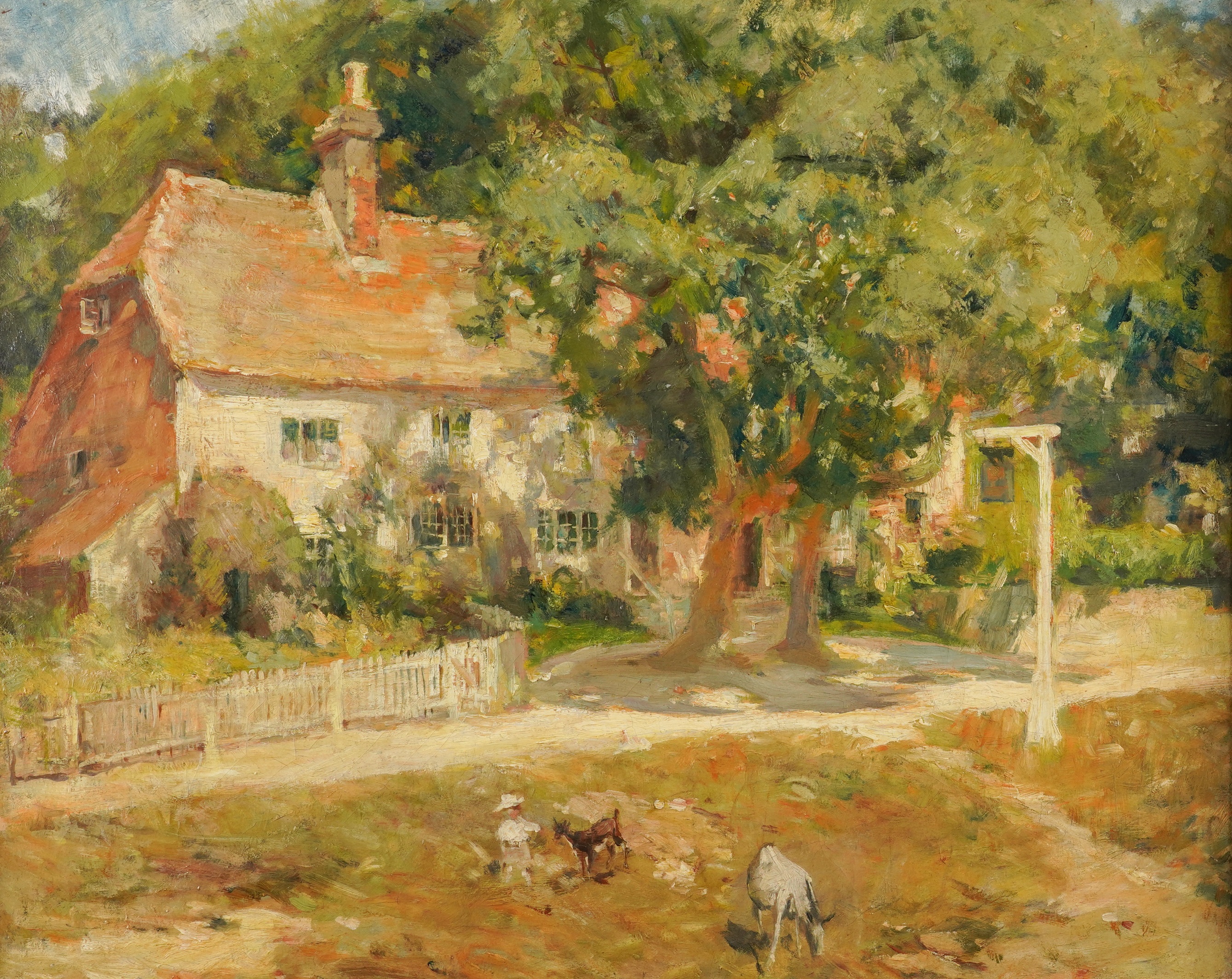
By the mid-1860s the young Symons was exhibiting works at numerous London galleries. His career as a designer was also flourishing, with commissions from Royal Doulton as well as prominent stained glass makers Lavers, Barraud and Westlake. He painted a frieze in the Sydenham house of millionaire W.R Sutton which had been designed by architect John Francis Bentley (1839-1902), the start of an association which would culminate in the decoration of Westminster Cathedral; Symons portrait of Bentley is held by the National Portrait Gallery (NPG 4479).
A trip to Paris in 1871 persuaded Symons to concentrate his efforts on painting; he sketched around Fontainebleau and Chevreuse, landscapes which provided rich inspiration for the Impressionists of the age. This led to an incredibly fruitful period where his work was exhibited to positive reviews at numerous galleries, including the Royal Academy, Manchester City Art Gallery and the Royal Society of British Artists. It was at the latter that he met James Abbott McNeill Whistler (1834-1903) who would remain a friend and confidante throughout his life; testament to this relationship was Symons resignation from the RBA, along with Whistler, at the end of the latter’s turbulent and controversial presidency. Symons was also close friends with John Singer Sargent (1856-1935) one of the founder members of the New English Art Club of whom Symons was an early supporter. He would often borrow Sargent’s studio in the Fulham road. Sargent’s influence on Symons’ style is clearly evident, particularly in their comparable treatment of light, as is the work of Hercules Brabazon Brabazon (1821-1906) another in Sargent’s circle, whose rapidity of execution and immediacy of effect are strongly reminiscent of Symons’ works on paper. Symons married in 1885 and, with an expanding family, moved to Sussex. He maintained his links with the London art scene however, illustrating for publications such as The Graphic, Strand Magazine and Magazine of Art and in 1899 he was secretary of a committee organising a dinner in Whistler’s honour. As well as Westminster cathedral he designed and painted four spandrels in the lantern of St. Botolph’s church, Bishopsgate and executed a number of works for Downside Abbey. As the 20th century dawned Symons held a series of exhibitions in the offices of law firm Le Brasseur and Oakley, founder Robert Le Brasseur being one of his principle patrons.
Symons married in 1885 and, with an expanding family, moved to Sussex. He maintained his links with the London art scene however, illustrating for publications such as The Graphic, Strand Magazine and Magazine of Art and in 1899 he was secretary of a committee organising a dinner in Whistler’s honour. As well as Westminster cathedral he designed and painted four spandrels in the lantern of St. Botolph’s church, Bishopsgate and executed a number of works for Downside Abbey. As the 20th century dawned Symons held a series of exhibitions in the offices of law firm Le Brasseur and Oakley, founder Robert Le Brasseur being one of his principle patrons.
Following Symons death in 1911 a large memorial exhibition was held at the Goupil Gallery for whom the young Van Gogh had worked in the 1880s, with the catalogue foreword written by Robbie Ross (1869-1918) close friend of Oscar Wilde. A chorus of glowing reviews greeted the exhibition with virtually all questioning why the artist had not enjoyed greater standing and prominence. The Morning Post review praised his ‘…exuberant joy, the joy of life, light and colour’, placing particular emphasis on his flower subjects with a judgement that, ‘…there is nothing finer of their kind in British Art.’ The Evening Standard emphasised his brilliance as a colourist while The Academy cited his ‘swift precision and skill’ and, like Sargent, ‘…a certain abrupt directness of method…a sort of brilliant impatience of anything but an immediate seizure of the very heart of the matter in question, be it form, colour or light…’ before concluding, ‘What work it is! How bold, how clearheaded, how absolutely straightforward!...Happy will be the collector who possess himself, in time, of some these fine works…’
An exhibition titled ‘The Rediscovery of William Christian Symons’, with an essay by renowned dealer and scholar Christopher Wood was held in the Victoria Art Gallery, Bath in 1994 and went on to be shown at Hasting Museum and Art Gallery and Borough Museum and Art Gallery, Newcastle-under-Lyme. This was followed in 1999 by an exhibition at Rye Art Gallery. The artist’s family are planning a further exhibition based in Battle, Sussex and may request a number of works from the current sale as potential inclusions.






